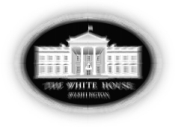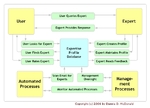 To download a free .pdf version of this article click on the above image.This morning U.S. Chief Information Officer Vivek Kundra released his ambitious 25 Point Implementation Plan to Reform Federal Information Technology Management. Here’s number 10:
To download a free .pdf version of this article click on the above image.This morning U.S. Chief Information Officer Vivek Kundra released his ambitious 25 Point Implementation Plan to Reform Federal Information Technology Management. Here’s number 10:
10. Launch a best practices collaboration platform
Within six months, the Federal CIO Council will develop a collaboration portal to exchange best practices, case studies, and allow for real-time problem solving.To institutionalize this best practice sharing, agency PMs will submit post-implementation reviews of their major program deliveries to the portal. These reviews will populate a searchable database of synthesized and codified program management best practices that all PMs can access.
Of the three proposed elements — best practices, case studies, and real-time problem solving — I’d put my money on real-time problem solving as having the best short-term potential for improving IT management practices.
Why do I say that?
It’s simple. By the time you document a “best practice,” the problem, event, process, or solution it addresses may have changed. The resulting archive will definitely have training, education, and planning value, but can it really contribute to solving a current problem?
OK, I admit I’m playing somewhat of the Devil’s Advocate here. After all, I’m definitely in the “knowledge is valuable only if it’s shared” camp, especially if you’re dealing with something as expensive and as complex as Federal acquisition processes.
But I think a more immediate and effective short term goal should be to make the expertise of people discoverable and available; this is why I’ll be contributing to the GSA’s “ExpertNet” research. In other words, when you have a problem, wouldn’t it be more effective if you could pick up the phone and call an expert rather than search through a database of documents to try to locate something close to what you’re dealing with?
I remember producing a series about expertise management that included, circa 2006, a simple model of what an “expertise management system” might contain:
 click image to display full size
click image to display full size
I wrote the following to further define an expertise management system:
An Expertise management System IS NOT:
- a document retrieval or file management system.
- an “expert system” that provides diagnostic or problem solving functionality.
An Expertise Management System IS a specialized Knowledge Management system that focuses on:
- finding out and continually recording what people (“experts”) in an organization know (“expertise”)
- making this expertise available to users so they can answer questions or solve problems that exceed personal or workgroup capabilities.
A lot has changed since 2006. We’ve seen a rapid growth in the availability of cloud based IT services. We’ve seen the rise in acceptance and use of “social networking” services such as Facebook and Twitter. These simplify making and managing relationships and exchanging information in near realtime via the web.
I italicized that last bit since the speed with which information can be exchanged via established relationships, even relationships as “lightweight” as a Facebook “friend” who has only minimal (if any) contact with you, can exceed what’s possible through construction, maintenance and use of a formally structured database that references past experience. In other words, what we’ve seen with the rise of social networks, to some extent at least, replaces the “expertise profile database” that sits in the center of the above model.
How would you rather solve a problem — talk with an expert, or find a document that expert wrote 6 months ago?
That’s the power of networking. For such networking to take place in the context of Federal IT operations, though, a variety of challenges will need to be identified and addressed. These range from “that’s not how we’ve always done things around here” to “we can’t talk with that person since he’s not part of our agency and doing so might get us into trouble down the road.”
I’m not suggesting these aren’t trivial barriers; they aren’t. You’ll often find an explanation for why the barrier exists. But, as the man said, the times they are a-changing and the Deficit Monster is demanding we cut government spending while doing more.
Making it easier for problem-solvers to exchange information is a good thing. Based on Kundra’s presentation this morning, we seem to be moving in the right direction. Now we need to get serious about figuring out:
- who needs to communicate and share information,
- what are the barriers keeping them from doing so, and
- what we can do to overcome those barriers.
Technology can help but can’t do the whole job.
Copyright 2006,2010 by Dennis D. McDonald. Contact Dennis via email at ddmcd@yahoo.com.

